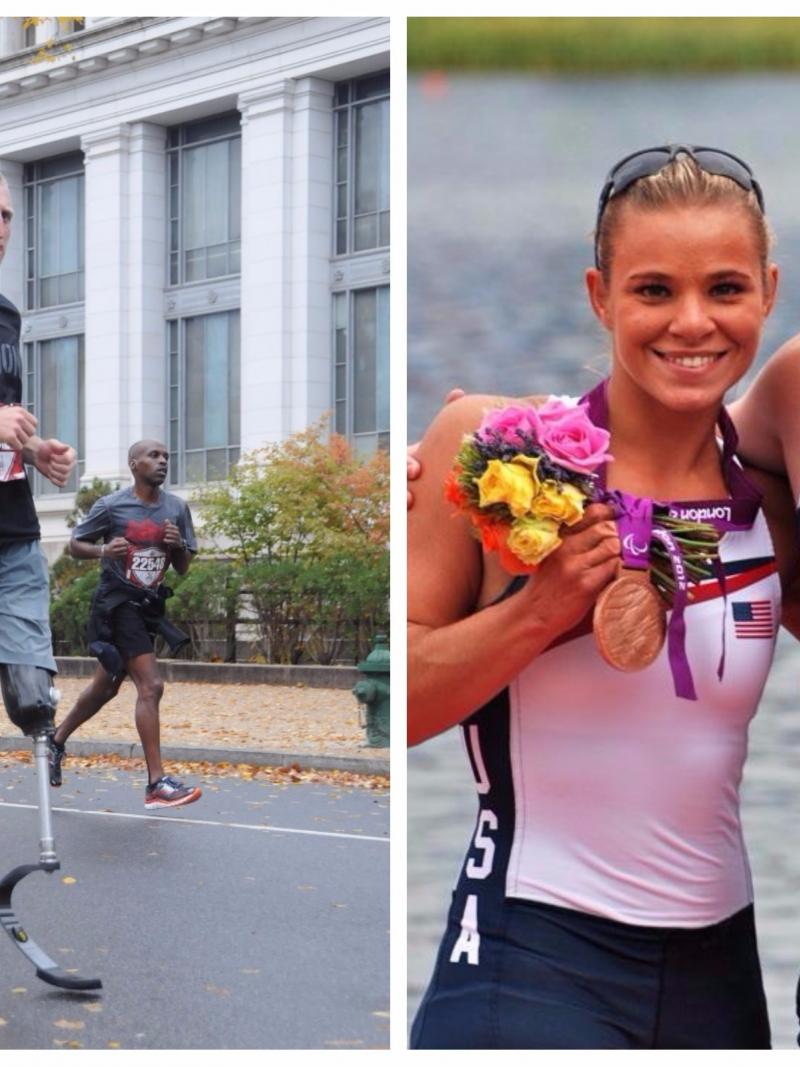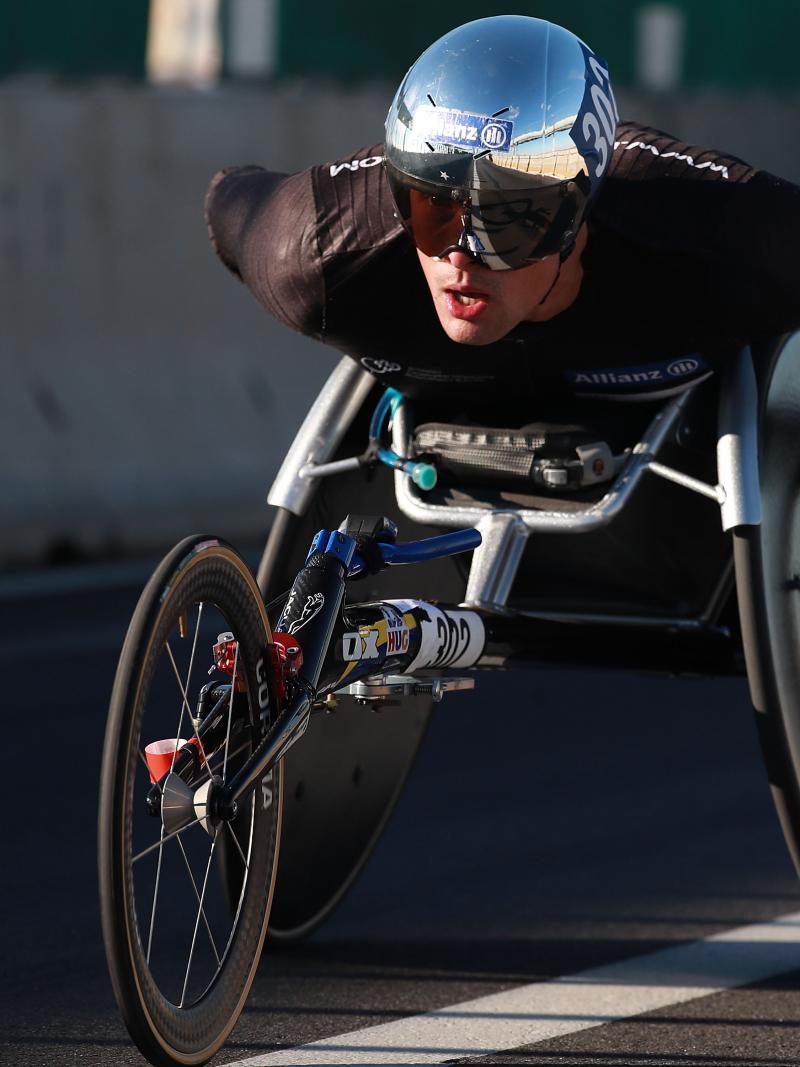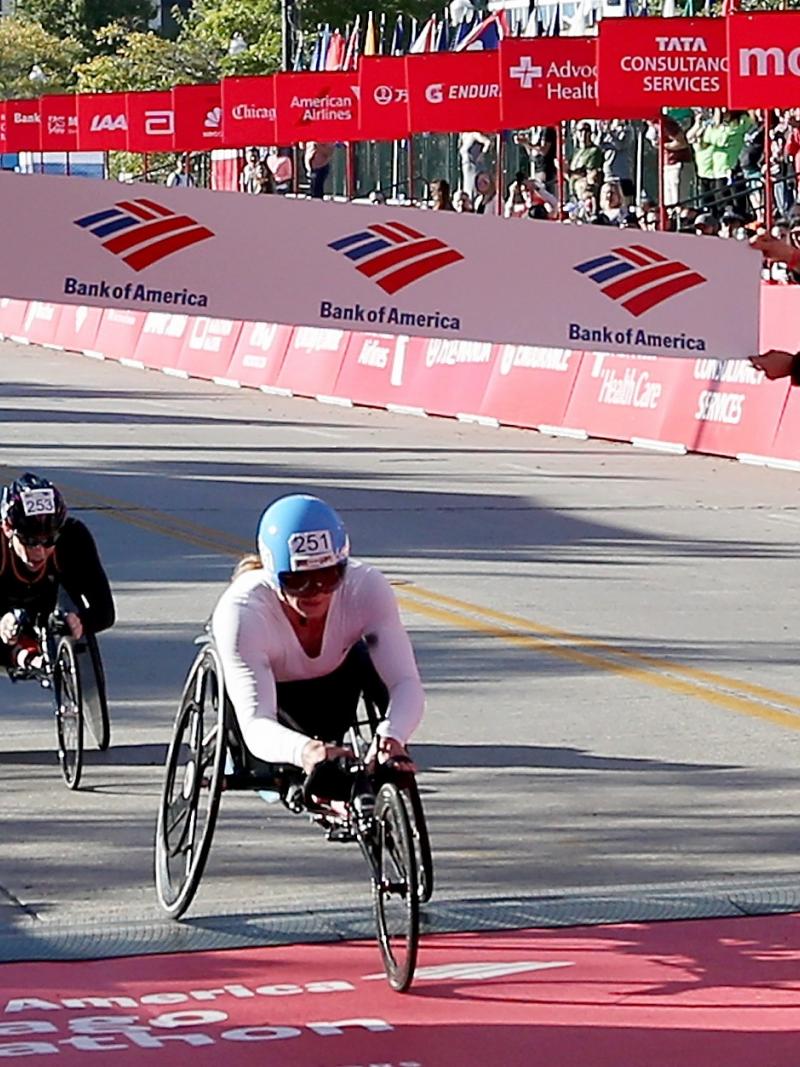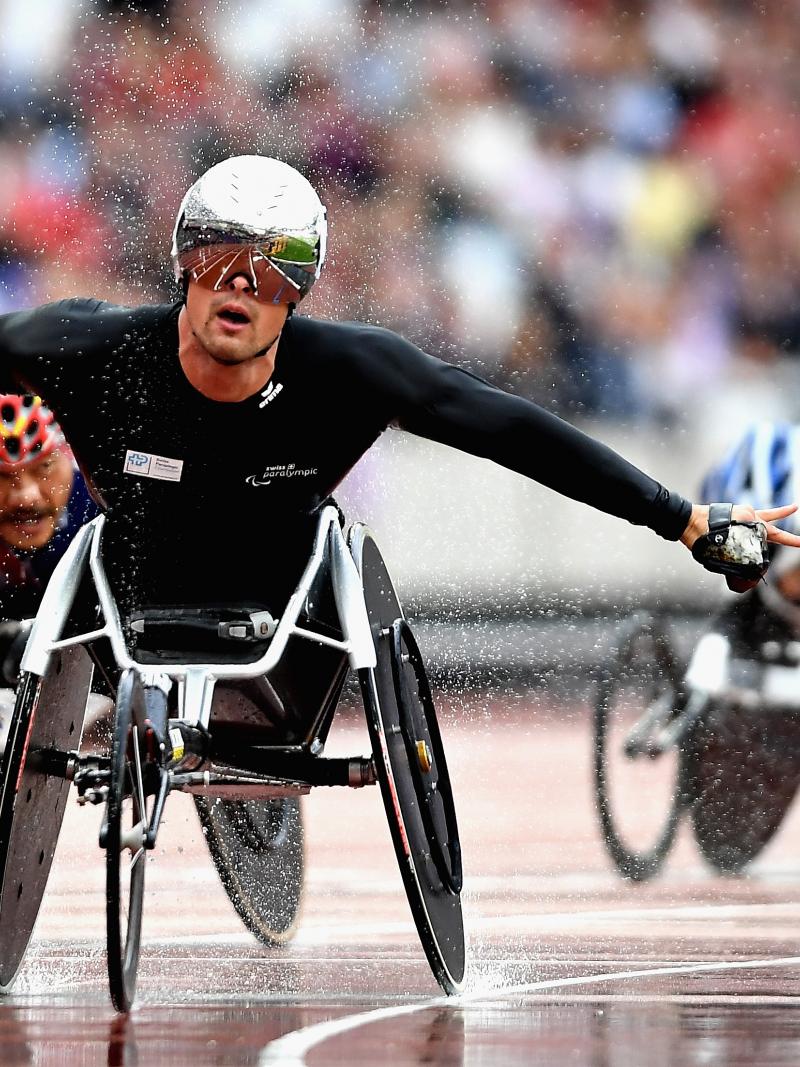New York Marathon: The Inside Track
2015 World marathon champion Josh George gives his unique guide to the race that takes place on Sunday and marks the final stop of the season 04 Nov 2017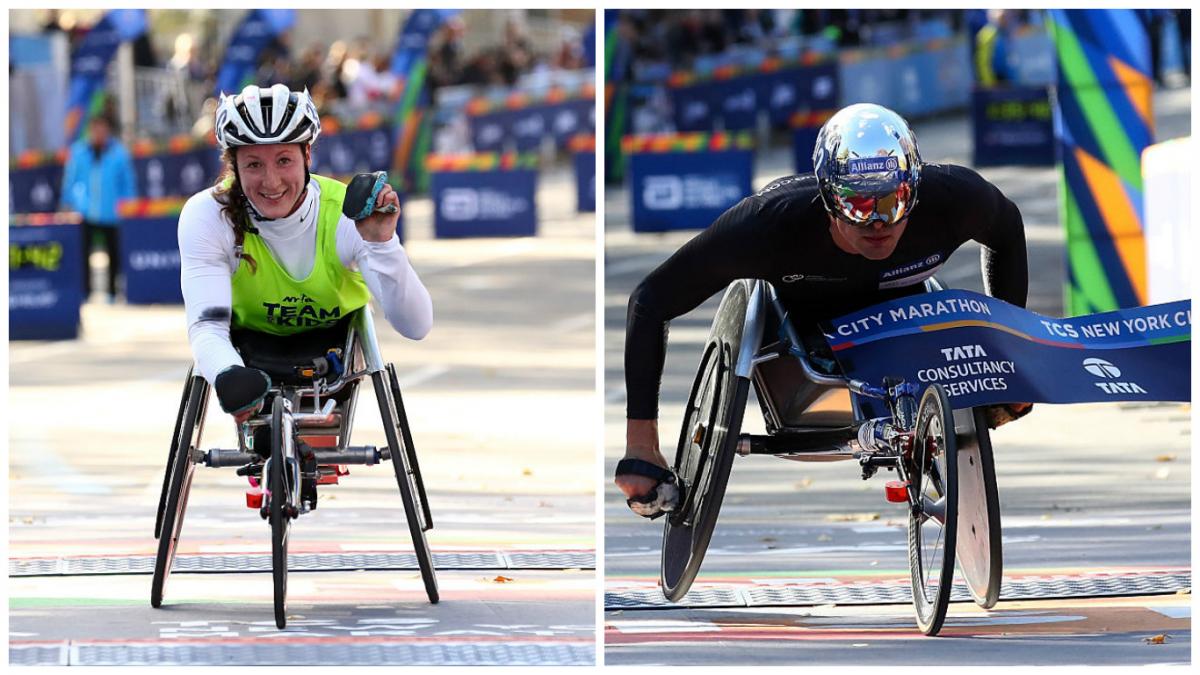
Tatyana McFadden of the United States and Marcel Hug of Switzerland are the defending champions in New York
The energy in Central Park is steadily rising, like someone slowly turning up the volume, the bass thumping harder, the melody screaming louder. It is marathon week in the city and runners across the globe are getting amped, waiting for the beat to drop Sunday morning to set them free to storm the five boroughs.
Interspersed in the growing throngs of runners, expertly weaving, avoiding ankles and knees by inches, are the fastest wheelchair racers in the world. The New York City Marathon marks the final stop of the season. Having spent most of the year as a lumbering giant waiting in a cave on a far off hill, the time has come when all racers must deal with the beast.
New York City is the hardest stop in the World Marathon Majors Series. Gone are the days of the flat, fast courses in Tokyo, Berlin, and Chicago. London’s serpentine struggles have become a day dream, and Boston’s high speed descents are now a fantasy.
What’s left are the bridges, potholes, and the grind of a race that you have to be READY for. There is no hiding in New York. If your form isn’t on point you will get chewed up and spat out before you go 10k, but if you are ready to fight and grind, the feeling of crossing that finish line after dominating the most gruelling 42.195 km of the year is one you will relish for a long time to come.
The marathon, like the city, welcomes you with a slap in the face before leaving you awestruck. The race starts in Staten Island, at the base of the Verrazano Bridge, and immediately presents the first make-or-break challenge of the course. Kurt Fearnley perfected the art of winning a marathon in the first mile of the race on this bridge in 2006 when he attacked the first climb of the course with such a fury that he established a gap that was insurmountable over the next 25 miles. After this approach proved successful it has been implemented in each consecutive year, stretching out the field, keeping packs small, and forcing everyone to work their share.
Though Fearnley is missing his first New York City Marathon in a decade, on Sunday we should see Marcel Hug and Tatyana McFadden implement this same technique and try to establish their dominance on the first climb of the day. If they are lucky they will reach Brooklyn with a comfortable lead or a small crew of racers to work with through some of the easiest miles of the race. Any breakaway that forms has to know it is being hunted. It is too early to feel comfortable, we still have four more bridges.
Looming on the north side of your Brooklyn tour is the 59th St. Bridge, and no matter what the map tells you, this bridge, from mile 15 to 16, marks the halfway point of the race. It is the second longest climb in the race and your best chance to break or be broken. Many a racer have hit 59th St. Bridge feeling fine and turned onto 1st Avenue in shambles. Not a recommended way to make your initial entrance into Manhattan if you have dreams of winning. The race only gets harder from here.
While 1st Ave. welcomes you with some lingering descents, like the poppy fields in Oz, this is no place to sleep. This is the portion of the race for the larger racers to shine. Any big guy you may have dropped over the bridge will have ample opportunity to reel you in over this 5k stretch (I’m looking at you Ernst Van Dyk). If you want to stay away, you have to push down the descents.
1st Ave. kicks you out into the Bronx for a short jaunt before cresting your last bridge of the day and coming back into Manhattan. Though the bridges are behind you, your arms long ago began screaming. Unfortunately, sanctuary is still miles away, and 5th Ave. offers nothing but tears. As Central Park enters your peripheral on your right, you may think that you are close to the finish, but each fresh push up the slight incline of 5th Ave. reminds you just how far you have to go. Any pack of racers to remain intact by this point in the race will want to relax and begin conserving energy. Once you turn into the park you only have 5k to go and you will need every ounce of energy to counter downhill attacks or initiate your final thrust to an uphill finish.
The New York City Marathon accepts no half-efforts. It is a grind from start to finish, and it is one of the most amazing races in the world. If you can win here, you can win anywhere.

 Facebook
Facebook
 Instagram
Instagram
 Twitter
Twitter
 Youtube
Youtube

